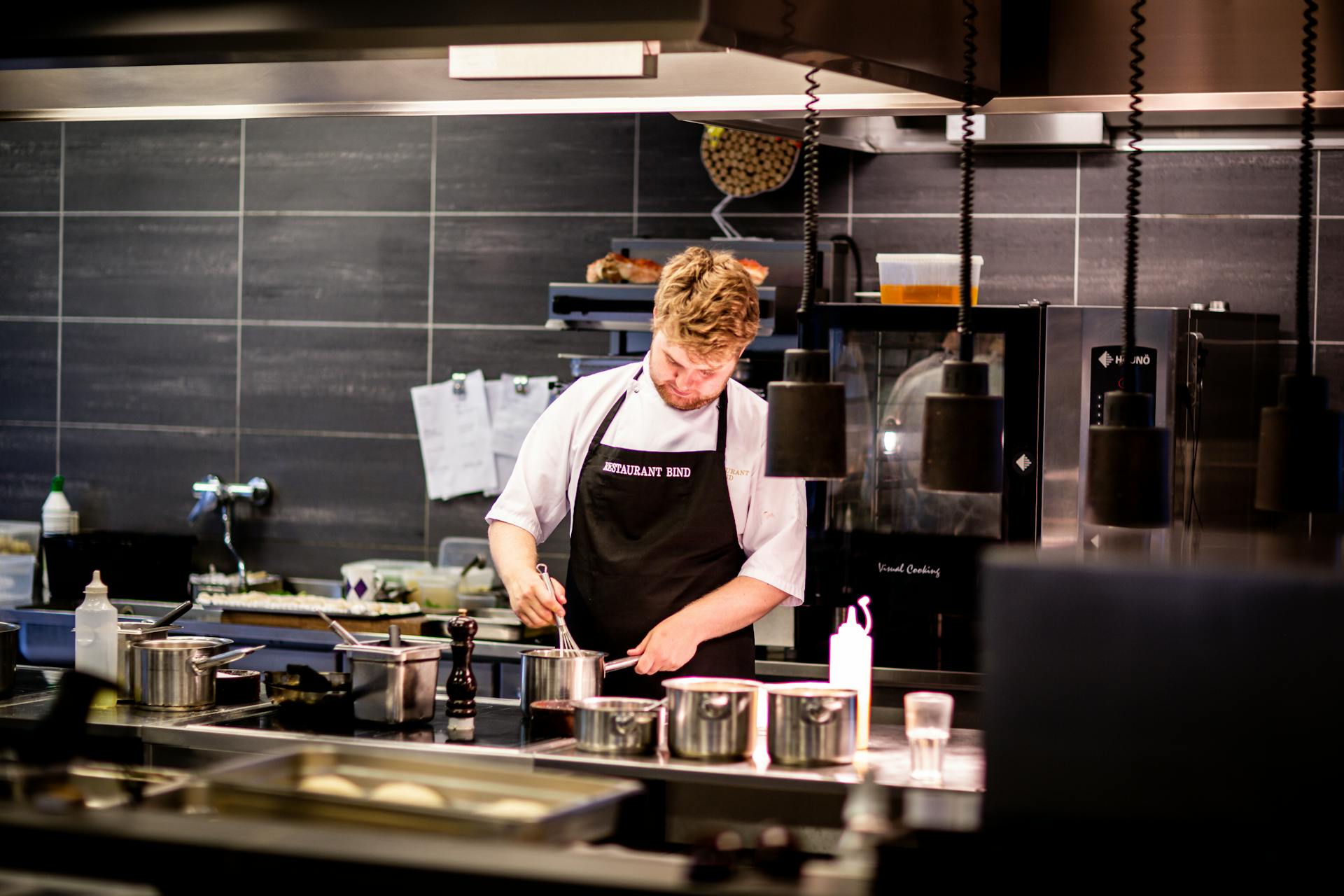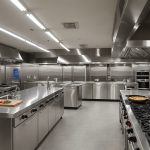Running a small restaurant requires a strategic balance between dine-in and take-away services. An efficient kitchen not only boosts productivity but also enhances customer experience. Understanding how to optimize space and workflow can make a significant difference. By integrating the best practices for both service types, restaurateurs can streamline operations, reduce wait times, and satisfy diverse customer needs. Let’s explore practical strategies that can lead to a thriving small restaurant environment.
Kitchen Layout and Design for Dual Service
Maximizing efficiency in small restaurant design requires strategic planning.
Have you seen this : Revolutionize your restaurant: cutting-edge approaches to implementing zero-waste practices in everyday operations
Open Kitchen Concept
An open kitchen concept enhances visibility and communication, crucial for a small restaurant design. This layout allows chefs and staff to coordinate seamlessly, ensuring an efficient workflow. Customers also enjoy the transparency, fostering trust and engagement.
Zoning Areas
Effective kitchen layout involves zoning areas for distinct purposes. Create zones for cooking, assembly, and take-away service to streamline operations. This separation minimizes cross-contamination and reduces the risk of errors. Consider these zones:
Additional reading : Revolutionizing Café Ordering: Innovative Tech Solutions for a Seamless Experience
- Cooking Zone: Dedicated to meal preparation and cooking.
- Assembly Zone: Space for assembling dishes and packaging.
- Take-Away Zone: Quick access for delivery and take-away orders.
Space-Saving Solutions
Incorporating space-saving furniture and equipment is vital. Compact, multifunctional pieces can transform a cramped kitchen into an efficient workspace. For example, foldable tables and stackable chairs can free up space when not in use. Choose appliances that serve multiple purposes, such as an oven with built-in steaming capabilities.
A well-planned kitchen layout and design not only improves workflow but also enhances the overall customer experience. By focusing on these elements, your small restaurant can achieve a harmonious balance between functionality and aesthetics.
Essential Equipment for a Small Restaurant Kitchen
Maximizing efficiency through smart equipment choices.
Multi-Functional Cooking Equipment
In a small restaurant kitchen, multi-functional cooking equipment is a game-changer. Investing in appliances that serve multiple purposes saves space and enhances productivity. For instance, a combination oven that steams, bakes, and grills can replace several single-purpose devices. This not only conserves valuable counter space but also simplifies the cooking process.
Space-Efficient Storage Solutions
Storage solutions that save space are crucial in a compact kitchen environment. Consider installing vertical shelving units to maximize wall space. Stackable storage containers can also help organize ingredients efficiently. This approach ensures that everything is within reach, reducing time spent searching for items and maintaining a clutter-free workspace.
Appliances for Quick Service and Easy Cleaning
Choosing the best appliances for quick service is essential for maintaining a swift kitchen operation. Look for dishwashers that offer rapid cycles and self-cleaning features. Induction cooktops are another excellent choice, as they heat quickly and are easy to clean. These appliances not only speed up service but also reduce downtime for maintenance.
Key Equipment Recommendations:
- Combination ovens
- Vertical shelving
- Induction cooktops
- Rapid-cycle dishwashers
By focusing on these essential elements, a small restaurant kitchen can operate efficiently, ensuring a seamless service experience for both staff and customers.
Streamlining Workflow for Dine-In and Take-Away
Enhancing kitchen efficiency through strategic workflow management.
Techniques for Optimizing Kitchen Flow
To achieve operational success, it’s essential to streamline the kitchen workflow between dine-in and take-away services. Implementing techniques such as clear signage and designated pathways can significantly reduce bottlenecks.
Examples of Optimization Techniques:
- Separate Order Stations: Different counters for dine-in and take-away orders.
- Color-Coded Systems: Use colored trays or tags to differentiate order types.
- Dedicated Staff Roles: Assign specific roles for dine-in and take-away tasks.
Implementing a Visual Management System
A visual management system is crucial for staff coordination. It helps maintain a smooth kitchen workflow by providing real-time updates on order status. Digital screens displaying order progress can reduce confusion and improve efficiency.
“Effective visual cues are the backbone of a coordinated kitchen,” says a seasoned chef.
Importance of Designated Pick-Up Areas
Designated pick-up areas are vital to reducing congestion and ensuring operational success. By clearly marking these zones, you create a streamlined kitchen workflow. This setup allows for quick access to completed orders, minimizing customer wait times and enhancing overall service efficiency.
By focusing on these strategies, your restaurant can efficiently manage both dine-in and take-away services.
Time-Saving Techniques for Kitchen Operations
Optimizing efficiency with strategic planning and execution.
Pre-Preparation Strategies
Implementing effective pre-preparation strategies is essential for enhancing kitchen efficiency. By preparing ingredients in advance, chefs can save significant time during peak hours. This involves chopping vegetables, marinating proteins, and measuring spices before service begins. Such steps reduce the workload during busy periods and ensure a smoother operational flow.
Batch Cooking
Batch cooking is a powerful technique that can greatly impact service efficiency. Preparing large quantities of popular dishes in advance allows for quick assembly and service. This method not only saves time but also ensures consistency in flavor and presentation. Consider preparing sauces, soups, and stews in bulk to streamline operations.
Scheduling Staff Shifts
Aligning staff shifts with peak service times is crucial for effective time management. By analyzing customer patterns, managers can schedule more staff during busy periods and fewer during lulls. This approach maximizes kitchen efficiency and reduces labor costs.
Key Time-Saving Techniques:
- Pre-preparation of ingredients
- Batch cooking of popular dishes
- Strategic staff scheduling
By focusing on these operational techniques, your restaurant can enhance its service efficiency, ensuring a positive experience for both staff and customers. Implementing these strategies will lead to a more productive and harmonious kitchen environment.
Inventory Management for Dual Service Types
Effective inventory control is crucial for maintaining a seamless operation.
Techniques for Tracking Inventory Effectively
Implementing robust inventory control methods is vital for small restaurants. One approach is using supply chain efficiency software that tracks stock levels in real-time, providing alerts when items are low. This ensures that you never run out of essential ingredients. Regular audits and cycle counts can also help maintain accurate records and prevent discrepancies.
Balancing Stock Levels for Dine-In and Take-Away Needs
Balancing stock management for both dine-in and take-away services requires a strategic approach. Analyzing sales data helps forecast demand, allowing for precise ordering. Consider a bulleted list of factors:
- Seasonal trends
- Popular menu items
- Supplier lead times
By understanding these elements, you can adjust stock levels accordingly, minimizing waste and optimizing supply chain efficiency.
Utilizing Technology for Inventory Management
Leveraging technology in inventory management streamlines operations. Digital platforms automate ordering processes and integrate with point-of-sale systems, offering real-time insights. This reduces manual errors and enhances overall supply chain efficiency. “Technology is a game-changer in modern inventory control,” notes a restaurant industry expert.
By focusing on these strategies, your restaurant can achieve a balanced and efficient inventory system, ensuring smooth operations for both dine-in and take-away services.
Adapting Menu Offerings for Dine-In and Take-Away
Crafting a versatile menu that satisfies diverse customer preferences is key.
Strategies for a Dual Service Menu
Creating a dual service menu involves thoughtful menu planning. Offering dishes that translate well from dine-in to take-away ensures consistency. Consider items that maintain quality during transit, such as stews or grilled meats. A well-planned menu caters to both service types, enhancing customer satisfaction.
Importance of Packaging
Packaging plays a crucial role in preserving food quality for take-away. It should keep dishes warm and intact. Opt for eco-friendly materials that appeal to environmentally-conscious customers. Proper packaging ensures that the dine-in experience is replicated at home, maintaining the integrity of your offerings.
Seasonal Menu Adjustments
Adapting your menu based on customer preferences and seasonal availability is essential. Regularly updating dishes can attract repeat business and cater to evolving tastes. Utilize a bulleted list to outline key factors for seasonal adjustments:
- Customer feedback
- Ingredient availability
- Seasonal trends
By focusing on these strategies, your restaurant can offer a menu that appeals to both dine-in and take-away customers, ensuring a seamless experience across service types. As a culinary expert notes, “A versatile menu is the backbone of a successful dual service restaurant.” This approach not only boosts satisfaction but also enhances operational efficiency.
Case Studies of Successful Dual Service Restaurants
Exploring industry best practices through real-life examples.
Overview of Successful Implementations
Several successful restaurant examples demonstrate the effective implementation of dual service. These establishments have seamlessly integrated both dine-in and take-away options, setting industry best practices. A notable example is a popular urban eatery that optimized its kitchen layout to support dual service, enhancing both customer satisfaction and operational efficiency.
Analysis of Kitchen Layouts and Strategies
Analyzing the kitchen layouts of these restaurants reveals strategic zoning and space utilization. One case study highlights a restaurant that restructured its kitchen to include separate zones for dine-in and take-away orders, minimizing cross-contamination and streamlining workflow. Their use of multi-functional equipment further exemplifies industry best practices.
Key Layout Strategies:
- Distinct zones for different service types
- Efficient use of space-saving equipment
- Clear signage for staff coordination
Lessons Learned and Actionable Insights
Lessons from these successful restaurant examples offer valuable insights. A crucial takeaway is the importance of flexibility in layout design to accommodate fluctuating demand. As a restaurant manager notes, “Adaptability is the cornerstone of success in dual service operations.” Implementing these strategies can lead to improved service speed and customer experience, reinforcing the significance of well-planned kitchen layouts and operational strategies.






